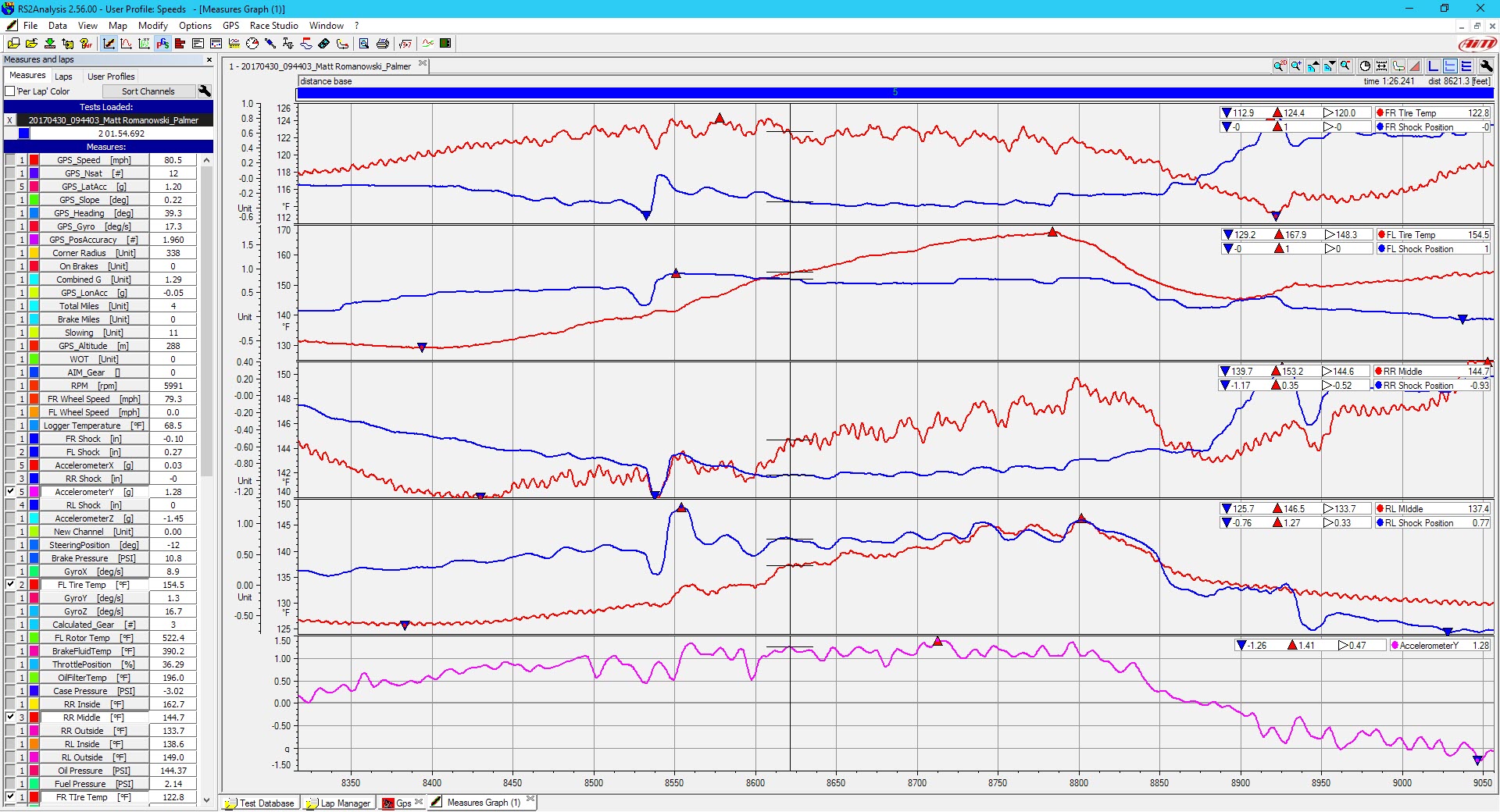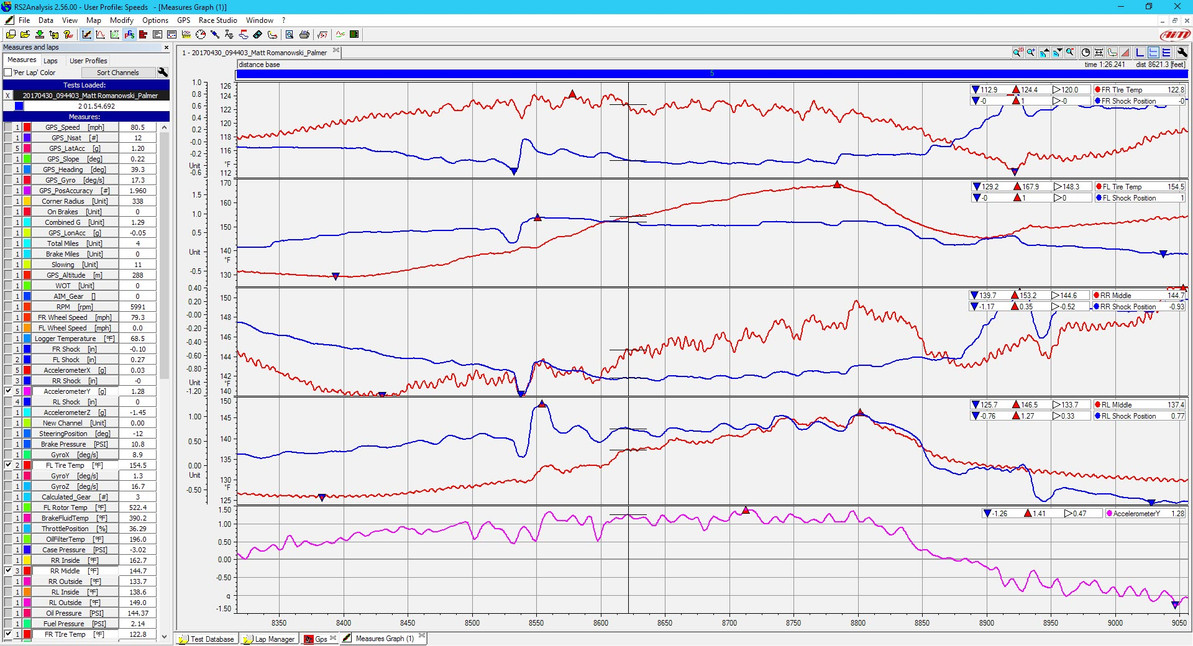Shocks, Tire Temps, and Load Variation
If you've ever talked to a suspension engineer, shock guy, or read up on suspension setup, you've probably seen where people say the goal is to reduce the contact patch load variation. That is a complex sounding way to say that you want to minimize how much weight moves around on your car to keep the same amount of weight on each tire. We just had a great example of this in practice.

If you look at the photo close, you'll see that there is temperature and shock position for each tire along with lateral G force at the bottom.
If you look close, you can see the variation in the shock position starting around 8600 ft (the numbers on the very bottom X axis). Then, if you look at the tire temps, you see that they have the same variation pattern. As the shock oscillates up and down, the load into the tire varies, creating temp variation. This is shown in the variation of the lateral G force in the very bottom graph.
The better you can control the suspension movement, the better the tires stay in contact with the road, giving you more grip.
The last neat thing in this data is the big movement in the shock position just before 8500 feet. If you look close, you'll see the front movement happens just before the rear movement. When you measure that offset, it matches the wheel base of the car perfectly. Talk about some great data!
Recent Posts
-
Position Sensors
So you want to know where something is? There are a lot of options! In motorsports we measure the po …Feb 2nd 2025 -
Pressure Sensor Info
So you want to measure a pressure? Gauge or absolute? Air or liquid? If air, gauge, absolute, or dif …Jan 22nd 2025 -
Driver health, monitoring, and performance
I was surfing Instagram and saw Dr. David Ferguson, of the Spartan Motorsports Performance Lab, post …Mar 22nd 2022


